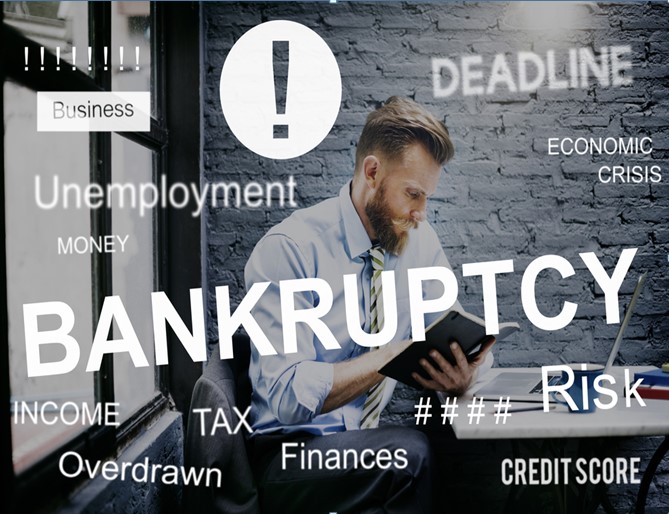Bankruptcy is a topic that is often avoided in businesses because idealistic entrepreneurs don’t want to think about it. It’s scary, and fear can be harmful for the entrepreneurial spirit. While the subject of this article tackles how entrepreneurs can avoid bankruptcy, it’s important to first start this reading with the knowledge that bankruptcy is a real threat to businesses that needs to be acknowledged. When you understand how bankruptcy can be a real problem regardless if you’re successful or not, only then will you be able to manage your situation and avoid it in the long run.
The subject of bankruptcy can be tricky if you’re running a small business as an independent entrepreneur. You may be starting out, but the threat of bankruptcy remains the same. The misconception is that because small businesses have less capital compared to their “bigger” enterprise counterparts, small business are less risky. While this may have some degree of truth, it’s also true that entrepreneurs can avoid bankruptcy given the right guidance. Below is your entrepreneur’s guide to smarter deals to avoid bankruptcy.
According to Intuit’s Quickbooks, despite how “normal” bankruptcy is in
the realm of business, it should only ever really be an option should certain situations be met. These are best discussed with a financial or business professional, as their knowledge on the matter can explain to you just how volatile the market can be. However, this doesn’t mean you shouldn’t stop running your business entirely. As an independent entrepreneur, bankruptcy might be a scary notion, but it’s one you can avoid with a few tricks.
Do you have enough money?
When it comes to prevention, being informed is the key for a successful plan. This also works with avoiding bankruptcy, especially as an independent entrepreneur. With your setup, chances are you’re already aware of much of the goings on in your business on a personal level. However, it’s also time to take a more in-depth dive to your spending as a whole to know where your weak spots are.
- Determine the overall amount you’re spending to pay your creditors to be able to avoid bankruptcy. Take note of this and determine the amount of money you need for your business to survive each month. This information will most likely be the amount of money you will have to spend every month for your business to thrive.
- Try to assess how much you’re spending on operations, including costs for raw materials, operations, and inventory. Try to take note of programs, applications, and details you’re using to ensure your company is working in tip-top shape.
- As you’re listing the above, you are most likely able to find out that there are some parts of your business that aren’t practical or can be replaced with newer technologies. Save these for later modification as you read this guide further.
Do you have alternative sources of money?
When bankruptcy is introduced, one might think the best way to avoid is to, well, “get money.” Well, duh, but there’s more to it than just retrieving funding for your business’s needs. Smart management of resources and a rainy-day fund can be of great assistance in times of need, which means a smart approach on the subject is to be aware of areas where you might be lacking and how to improve upon them.
- For instance, try to check if you have enough capital to sustain your business for a particular amount of time. Not having enough capital, even if your business is afloat, might indicate instability. If you think you’re about to struggle, it’s not a bad idea to ask for additional funding from investors or to borrow the money you need to make sure you have enough to stay solvent.
- if you have current debt or loans, try to renegotiate the terms to more favorable ones, especially if you think you wouldn’t be able to repay those debts in the long run.
- Push come to shove, you may have to liquidate non-essential parts of your business, or you may even have to put in a few personal investments of your own. If you have to be tighter when it comes to your balance sheets, then do so.
Does your system work?
Sometimes, if you think your business is struggling, it might be because of a system you’re implementing that isn’t working for you. In bigger companies, part of the problem might involve managers that aren’t fit for their roles, or if the company is in need of other individuals that can contribute better ideas.
- If there’s a part of the year or the month where you’ll have to make adjustments to your company’s systems, try to assess it as a whole and think of its sustainability in the long run. Are your marketing campaigns performing well? Are your products selling? Where are you lacking in terms of operations? If the solutions you’ve implemented thus far aren’t working to your favor, perhaps there’s a need for a new system entirely.
- For instance, you can try using better software or more efficient systems of data management in order to streamline parts of your business that are otherwise costing you more.
Conclusion
If there’s anything the above article may have shared, it’s the reality that bankruptcy is a real threat to businesses and, like most threats, can be mitigated and avoided. It’s only when you treat bankruptcy as a natural part of the business cycle that you will be able to actually plan to avoid it. As such, it may also be helpful to consult the help of a business and/or financial professional in order to get better insights on the subject. If you’re looking into the legal aspect of the situation, it may also help for you to consult a lawyer. Click here for more information.
Bella Flanagan
Bella Flanagan has dedicated much of her life to law, and her pieces as a writer are imbued with her wisdom obtained from over 20 years of experience in business. Bella enjoys hanging out with her grandchildren when she has the free time.
Related Posts













